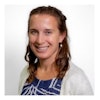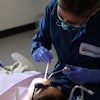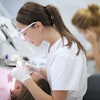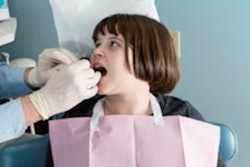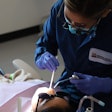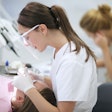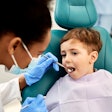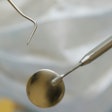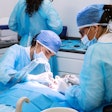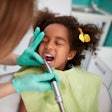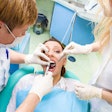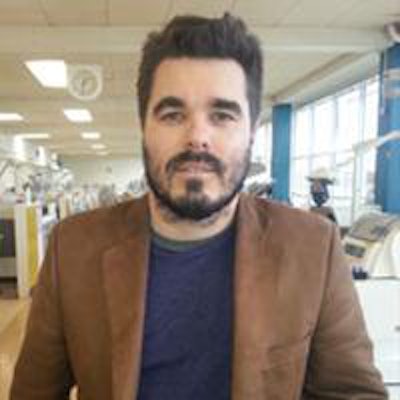
A groundbreaking University of Otago study of dental therapists in New Zealand has highlighted the crucial role they play in child protection, plus the barriers they face when seeking to report suspected cases of child abuse.
Registered dental therapists, most of whom work for District Health Boards, are often the most consistent healthcare practitioner New Zealand school-age children will see up to the age of 14 years, the study authors noted. But until this study, the role of these practitioners (previously known as dental nurses) in detecting child abuse and contributing to child protection has remained largely unexplored.
The study findings were presented at the recent International Association of Dental Research (IADR) conference in Bangkok.
 Johnathan Broadbent, BDS, PhD.
Johnathan Broadbent, BDS, PhD.
"The study suggests they can have a useful and important role in detecting cases due to the fact that they see children in the age group in which the majority of child abuse/maltreatment occurs (based on New Zealand figures)," Jonathan Broadbent, BDS, PhD, a senior lecturer at the University of Otago Faculty of Dentistry wrote in an email to DrBicuspid.com.
Dental therapists are an established part of the country's oral care system, Dr. Broadbent noted. New Zealand has about 750 dental therapists, and the dental therapist-child ratio is one full-time equivalent dental therapist for every 1,700 children age 14 or younger.
In the study, University of Otago researchers Dr. Broadbent, Colleen Murray, and final-year dentistry student Dhara Tilvawala looked at dental therapists' knowledge and beliefs about child maltreatment.
About half of the total number of registered dental therapists in New Zealand (320) completed questionnaires in which they were asked how frequently they suspect and report child maltreatment, their participation in and demand for relevant training courses, and their views of the main barriers to reporting suspected cases.
The researchers found that, over the past year, 55 of the 320 dental therapists surveyed had each suspected up to 10 cases of physical abuse, 87 had suspected up to 10 cases of child neglect, and 101 had suspected up to 10 cases of dental neglect. Not all suspected cases were reported, but international studies have shown that the therapists' level of reporting is comparable to and, in some cases, better than those of dentists and specialists in other countries.
Common signs
Tilvawala, whose participation in the project was funded by the Child Injury Prevention Foundation and carried out as a summer studentship, said the dental therapists who participated in the survey reported seeing bruises and physical signs of abuse to the head and neck area, including cigarette burns, and children who seemed overly fearful and flinching when the dental therapist tried to look in their mouths. In physical abuse cases, 50% to 75% of injuries are to the head and neck area -- the area that therapists look at and treat.
In New Zealand, dental therapists are the most common type of health professional to see children, more than their general practitioner, Tilvawala noted.
The biggest barriers to reporting child abuse were that therapists were unsure how to refer cases, and they feared mistakenly reporting someone because it could have negative repercussions, the study authors concluded.
Other barriers to reporting included unfamiliarity with the signs of child abuse, lack of historical knowledge, and fear of violence to themselves from caregivers in their clinic or fear of confronting people. A very small number feared losing patients.
According to Murray, one of the biggest problems the dental therapists faced was knowing where to report suspected cases of child maltreatment. Some will discuss it with a colleague or a dentist who is their mentor, about 40% will report directly to the Child Youth and Family service, while others may report what they suspect to a teacher or school principal, she explained. The study showed that very few will report the matter to the police.
However, that could change, Murray noted, given that almost 2 in every 3 therapists have attended ongoing professional development courses on this topic. Their interest in acting upon signs of child abuse is clear. Almost all (94.6%) of the dental therapists felt they had a responsibility to report cases in which they suspected child abuse, with 75.8% of those believing reporting should be mandatory.
The path to becoming better qualified to report child abuse will come from continuing professional development, support from colleagues, and from their employer, according to Dr. Broadbent. In New Zealand, the main employer of dental therapists is the Public Health Service District Health Boards, he noted.
In 2003, the United Nations International Children's Emergency Funds (UNICEF) reported that deaths among children due to abuse and neglect were six times greater in New Zealand than similar developed countries. Data from the Ministry of Social Development shows that in 80% of recent reports of suspected abuse, the children were age 14 and younger -- the same age group treated by dental therapists, the researchers noted.
"Our hope is that this research will be applied in New Zealand health policy and maybe even help guide overseas research and policy," Dr. Broadbent said.
